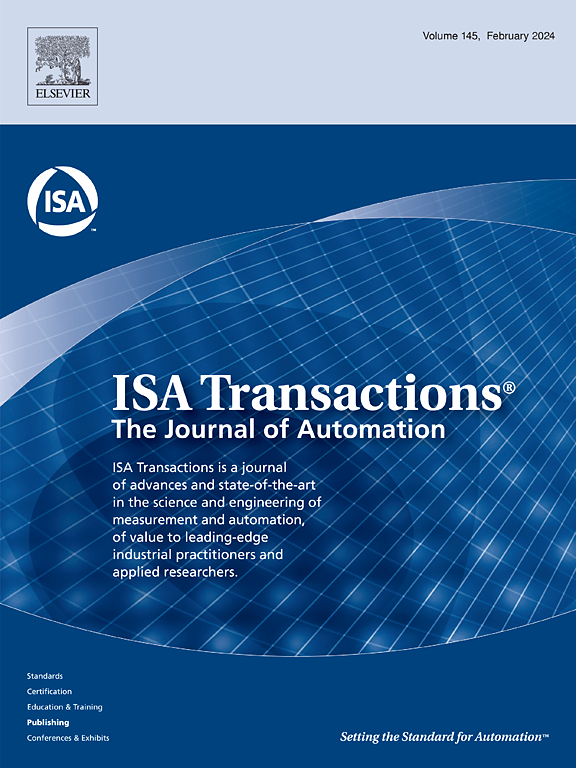Robust formation control of multiple aerial robotic vehicles using near neighbor cyclic deviation with time-varying disturbances
IF 6.3
2区 计算机科学
Q1 AUTOMATION & CONTROL SYSTEMS
引用次数: 0
Abstract
Cooperative formation flight of multiple aerial robotic vehicles (ARVs) is extensively adopted in emergency rescue and collaborative transport. But the time-varying complex disturbances are inevitable in the cooperative formation flight of multiple ARVs, which can affect the formation stability of multi-ARV systems. This paper investigates the robust formation control problems for multiple ARVs with time-varying disturbances. A novel high-order sliding mode control (HOSMC)-based near neighbor cyclic deviation synchronization control (NNCDSC) scheme for multi-ARV systems is proposed, which can improve the formation control precision and enhance the robustness against time-varying complex disturbances. Firstly, the formation control problem is transformed into the synchronization control problem of multi-ARV systems; a novel NNCDSC strategy is proposed, that can decrease the complexity of the formation control system. Secondly, to better cope with time-varying complex disturbances and improve the formation control accuracy of multi-ARV systems, the HOSMC-based NNCDSC scheme for multi-ARV systems is designed by combining NNCDSC and HOSMC. The finite time stability of the formation control system can be guaranteed by Lyapunov stability theorem, and the desired time-varying or time-invariant formation of multi-ARV systems can also be achieved. Finally, the validity of the theoretical results is verified by several simulation examples and an outdoor experiment.
利用具有时变扰动的近邻循环偏差实现多个空中机器人飞行器的鲁棒编队控制。
本文章由计算机程序翻译,如有差异,请以英文原文为准。
求助全文
约1分钟内获得全文
求助全文
来源期刊

ISA transactions
工程技术-工程:综合
CiteScore
11.70
自引率
12.30%
发文量
824
审稿时长
4.4 months
期刊介绍:
ISA Transactions serves as a platform for showcasing advancements in measurement and automation, catering to both industrial practitioners and applied researchers. It covers a wide array of topics within measurement, including sensors, signal processing, data analysis, and fault detection, supported by techniques such as artificial intelligence and communication systems. Automation topics encompass control strategies, modelling, system reliability, and maintenance, alongside optimization and human-machine interaction. The journal targets research and development professionals in control systems, process instrumentation, and automation from academia and industry.
 求助内容:
求助内容: 应助结果提醒方式:
应助结果提醒方式:


